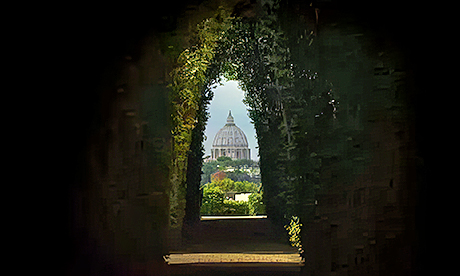Among the many popular and impious sayings about Rome, some dating back to early times, there is this little gem: Roma veduta, fede perduta.
Basically, it means you risk losing your faith when you go to the Eternal City.
It’s certainly a phrase that was bantered about during the 16th century when Martin Luther (an Augustinian friar from Germany), John Calvin (a theologian from France), and John Knox (a priest from Scotland) – Roman Catholics one and all – became leaders of various movements to reform a Church they saw as corrupt and worldly, one that had drifted far away from the Gospel of Jesus Christ.
Of course, the senior hierarchs in the papal court at that time saw things somewhat differently and these “Catholic reformers” ended up breaking with Rome (actually the pope excommunicated them), cementing what has since been known as the Reformation – the Protestant Reformation.
The deep divisions – and religious wars – that followed, fractured Western Christianity to the point that Roman Catholicism and the new Reform Church communities became entrenched in a sectarian mentality over time.
Rome and the “restoration” of Church unity
The pontificate of John XXIII (1959-63), and the Second Vatican Council (1962-65) that he convoked, brought to fruition the efforts that some Church leaders and theologians, both from Catholicism and the Reform tradition, had been working on during the previous decades to promote unity in the one Church of Jesus Christ.
The Vatican, and the rest of Roman Catholicism, suddenly became committed to the ecumenical movement in a way that the Bishop of Rome and those in communion with him had never been before.
Despite Vatican II, which is considered the most monumental event in the Christian Church since the 16th century Reformation, the ecclesial community in Rome has been cautious in how it promotes the “restoration” of the Church’s unity, as the Vatican II decree on ecumenism, Unitatis redintegratio, called it.
The unfunny joke often repeated during the pontificate of John Paul II was that the Vatican’s form of ecumenism was “you-come-in-ism”.
In other words, the other Christian denominations should just “return” to Rome and submit to the leadership of the Roman Pontiff.
Pope Francis has changed that, but – ironically – without undertaking any major ecumenical initiatives, at least at the institutional level.
It is difficult to call to mind any groundbreaking events or projects the Dicastery (formerly Pontifical Council) for Promoting Christian Unity has sponsored to help hasten the “restoration” of Church unity.
Its officials continue to participate in the dialogues with other parts of the fractured Church that were established decades ago, but their Vatican office has not done much else.
A focus on the “peripheries”
Francis, on the other hand, has often met individually with leaders of other parts of the Church not in communion with Rome.
He even went to Sweden in 2016 to mark the 500th anniversary of the Reformation in a gesture of friendship and show of at least partial Church unity with Christians of what can now rightly be called the Reform tradition.
And the Jesuit pope’s concerted effort to focus on the Church in the “peripheries” has played a role in helping Catholics (and others) to begin taking a healthy distance from Rome and the unhealthy obsession with all things Vatican.
Another irony, however, is that this has somewhat increased the (also) unhealthy idolisation (or at least idealisation) of the Roman pope!
The Synod
Hopefully, the upcoming two-pronged assembly of the Synod of Bishops will, despite its being held at the Vatican, further help Catholics and Christians of other denominations see that a balance can be struck vis-à-vis the role that Rome and its bishop play within the one, though still divided Church.
The first of the assembly’s two sessions (the second is twelve or so months from now) gets underway on October 4th.
It will be prefaced a few days earlier with a large ecumenical prayer vigil in St. Peter’s Square, followed by a three-day retreat for the 400-some participants of the month-long Synod gathering.
The aim of this assembly, which was carefully prepared over the past two years through consultations with Catholics all over the world in all walks of life, is to prayerfully discern where the Holy Spirit is calling the Church today.
It is crucial that those who will be at the assembly are aware that there is no future for a divided Christianity.
If the focus is only on the Roman Church (and just those Christian communities in communion with it), this will be another waste of time, because Rome and the Vatican are no longer the center of the Christian or even more narrowly defined “Catholic Church” universe.
It should be clear by now that this is one of the major things that has shifted in the Church during the ten-year pontificate of Pope Francis.
- Robert Mickens is La Croix International’s Editor in Chief. He had lived ed, studied and worked in Rome for 30 years.
- First published in La Croix International. Republished with permission.
